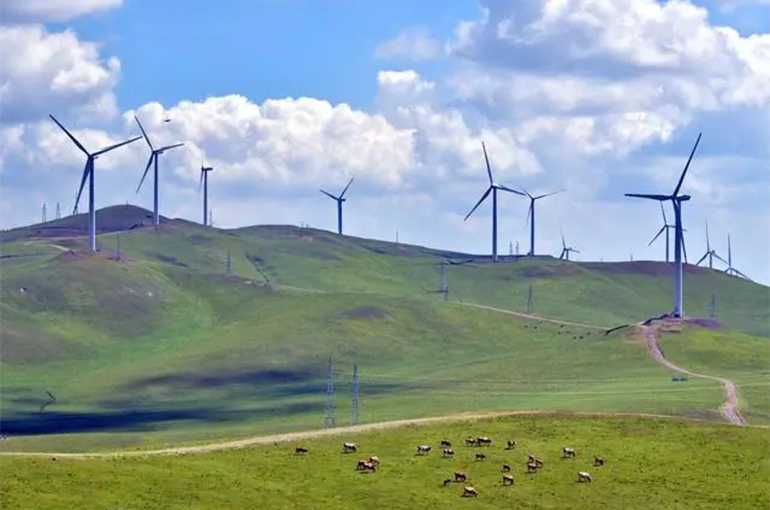 First Batch of Wind Power Projects in Inner Mongolia’s Gobi Desert Come on Stream
First Batch of Wind Power Projects in Inner Mongolia’s Gobi Desert Come on Stream(Yicai) Dec. 18 -- The first batch of four wind power projects in Inner Mongolia Autonomous Region’s Gobi Desert, an area rich in solar and wind energy resources, have come on stream.
The installed capacity of the four projects is 3.1 kilowatts, of which 1.2 million kW will be supplied to Inner Mongolia and the remaining 1.9 million kW to China’s eastern Shandong and Jiangsu provinces through ultra-high voltage power grids, Yicai learned from State Power Investment Corporation Nei Mongol Energy, the owner of the projects.
The four wind power projects can generate about 8.9 billion kilowatt-hours of clean electricity every year, which can save 2.8 million tons of standard coal, reduce 7.5 million tons of carbon dioxide emissions, and cut 2.8 million tons of sulfur dioxide, soot, and nitrogen oxides emissions.
In February last year, China released a plan to develop large-scale wind and solar power bases in the Gobi Desert to achieve an installed capacity of 455 million kW by 2030.
By the end of the year, the installed capacity of new energy in operation of SPIC Nei Mongol Energy will double to over 7 million kW, accounting for more than 50 percent of its total capacity, an executive at the Inner Mongolia-based unit of state-owned SPIC said.
The development of wind and solar power in the Gobi Desert can form a scale effect, reduce land, infrastructure, operation, and maintenance costs, and bring significant growth to new energy development, an industry expert told Yicai.
China’s newly installed capacity of wind and solar power will exceed 200 million kW this year, the source added.
Editors: Dou Shicong, Futura Costaglione